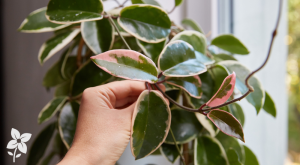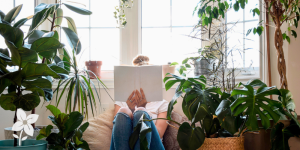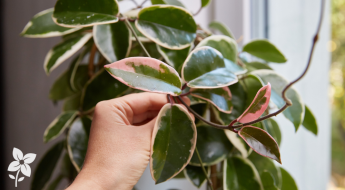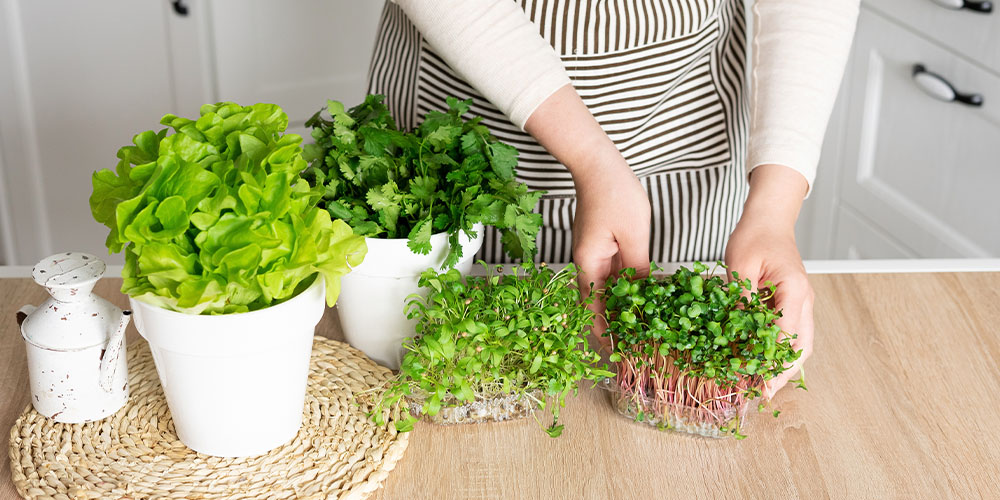
Whether you’re getting ready to hunker down for the winter or you’re living without access to an outdoor space, learning how to grow your own vegetables indoors can keep your grocery bill down while putting your green thumb to good use.
All About Growing Vegetables Indoors
Growing vegetables indoors has never been more popular. With the increasing trend to grow our own food, garden centres and innovators everywhere are coming up with new ways to grow the tastiest vegetables possible, all without the traditional garden setup. While not every vegetable is going to thrive indoors, there are a few that should do just fine with a bit of proper care.
With the right indoor gardening supplies, you can transform a sunny windowsill into a thriving herb garden.
- Seedling trays
- Vegetable or herb seeds of your choice
- Grow lights
- Dome lids (to keep humidity in during dry months)
- Misting bottle
- Vegetable fertilizer
- Seed-starting soil
You may not need all of these supplies. It will completely depend on what you are growing and how much light and humidity your vegetables will get while indoors.
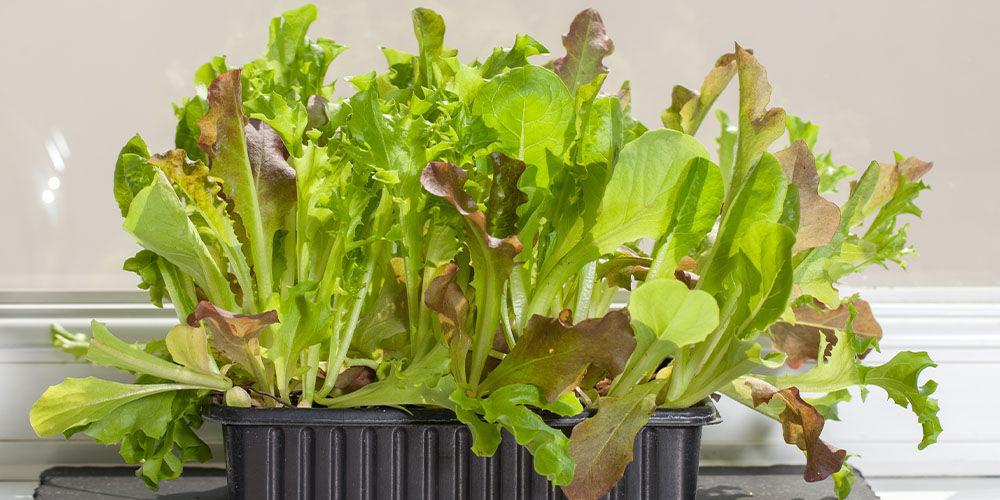
Grow Your Own Salad
In the words of Homer Simpson: “You don’t win friends with salad!” While perhaps it’s not a fan favourite at a potluck, growing your own vegetables indoors provides all the ingredients you need for an innovative salad that you can be proud of. Growing salad greens is one of the easiest ways to have vegetables indoors. They grow quite quickly and won’t take up a ton of space. Lettuce, mesclun, spinach, and arugula are some good options to try as you’re starting your indoor vegetable garden.
- Plant in a shallow container like a seed-starting tray
- Use a soil that’s ideal for seed-starting
- Keep it moist by covering it with plastic wrap or a dome lid
- Keep it under light for 12 hours per day while starting (this is where a grow light comes in handy!)
After just one month, you’ll likely be able to harvest and enjoy the vegetables of your labour.
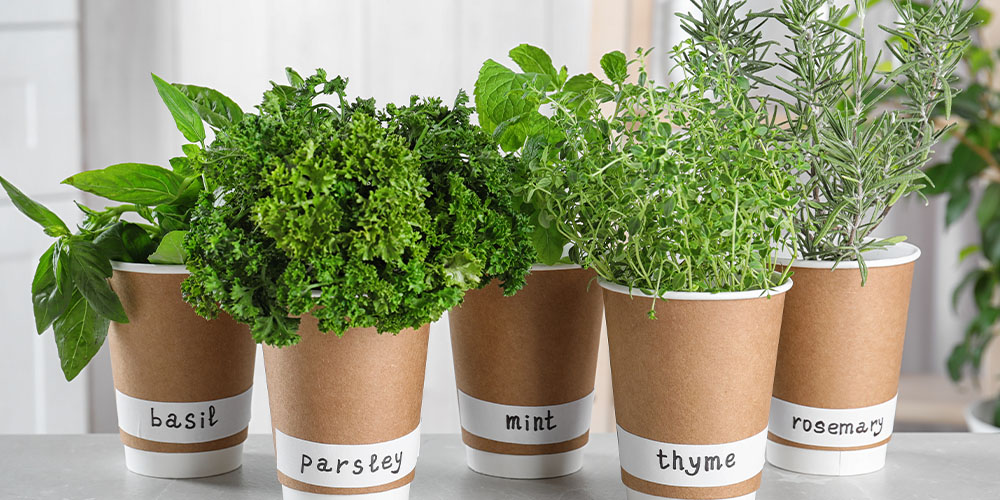
Growing an Indoor Herb Garden
Herbs are incredibly easy to grow indoors and pack a punch in any dish you cook. Herbs can be quite pricey at the store, and quality is sometimes lacking. Start growing your own today and experiment with different herbs until you find your perfect combination. Some of the best herbs to grow indoors are oregano, dill, cilantro, basil, mint, parsley, and sage. You can grow them under a light or try a nice, bright South-facing window. Follow the directions on the seed packets and keep the soil moist, but not soaked.
After a few weeks, you should be able to start harvesting your herbs for aromatic, delicious main dishes, salsas, and drinks. Remember never to harvest more than â…“ of the plant at a time.
Great Garden Veggies to Grow Indoors
There are a few larger-sized garden vegetables that you can try growing indoors:
Scallions
Starting scallions is easy and requires little maintenance. You could also buy a bundle of scallions at the store and pop them in water, where they will triple or quadruple overtime. Planting them in soil and growing them indoors will give you continuous flavour for all your meals.
Radishes
Radishes are the underdog of the vegetable world. Sometimes overlooked for more charming root vegetables, they add a pop of pepper flavour and grow so quickly. You can have a fully grown radish in one month, plus their sprouts are edible too!
Potatoes
Boil “˜em, mash “˜em, stick “˜em in a stew. If they’re good enough for hobbits, they are good enough for you and your indoor garden. If you’re planting these versatile root vegetables indoors, you’ll need to keep in mind that they grow quite large and need a deeper container, so make space!
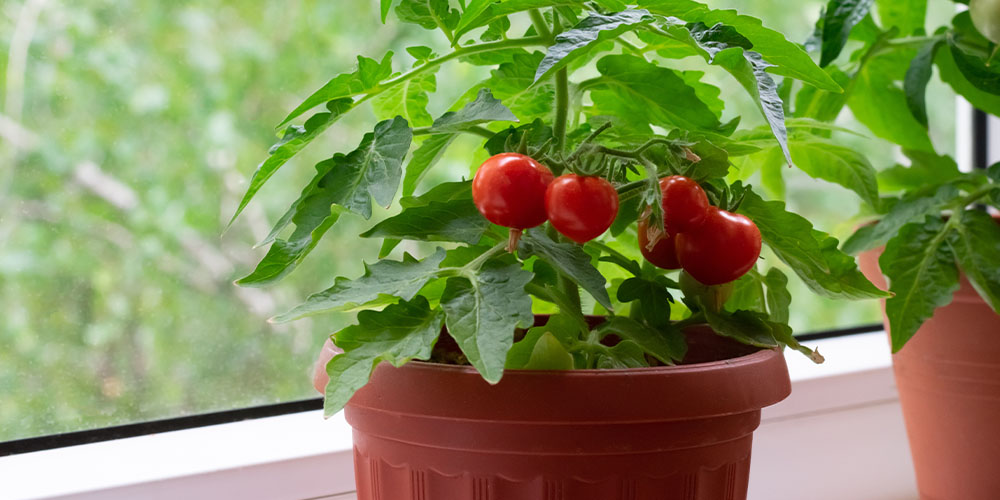
Tomatoes
Tomatoes can be a bit fussy at the best of times, so growing these honorary vegetables indoors can have some obstacles. Boost their growth with grow lights or opt for hydroponic growing. To save on space, find tomato varieties that grow compactly like Candyland Red, Fantastico, or Patio.
Hydroponics 101
Using hydroponics to grow your own vegetables indoors is an innovative way to have your own edible garden. Essentially, hydroponic growing eliminates the need for soil and actually uses less water than traditional soil gardening. It can be a bit of a process to set it all up, but it eliminates so many gardening curveballs like under or overwatering, and eliminates pests. Visit our garden centre to find out more about hydroponic growing and pick up a kit of your own with everything you need. \
If you’re looking for more tips and supplies for indoor vegetable gardening in Edmonton, come visit us! We’d be happy to help you grow your own garden inside and have your tastiest year yet.

